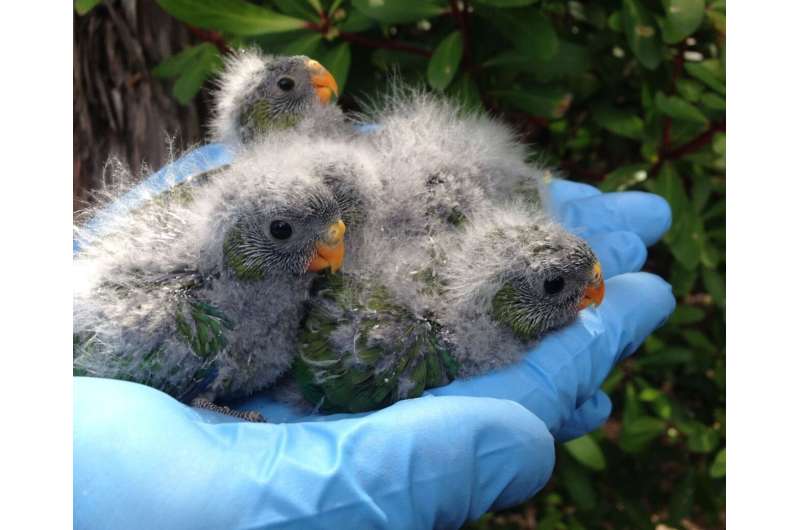This article has been reviewed according to Science X's editorial process and policies. Editors have highlighted the following attributes while ensuring the content's credibility:
fact-checked
trusted source
proofread
Study examines survival of the fittest for critically endangered parrot

The critically endangered orange-bellied parrot's first attempt at migration is often full of risk, but a new study from researchers at The Australian National University (ANU) offers clues about which birds are most likely to survive.
The study, led by Ph.D. candidate Laura Bussolini, examined juvenile survival rates of both wild and captive-bred orange-bellied parrots.
"Surprisingly, both groups were equally likely to survive their first migration," Bussolini said.
"But birds that were heavier as nestlings were much more likely to survive—regardless of whether they came from the wild or captive population."
The study draws on years of data on chicks and their growth.
"There was a bit of variation in chick body condition by year in the wild population—this is not surprising because they're responding to so many variable conditions like the amount of food available, predators and wild weather," Bussolini said.
"But wild-born nestlings were almost always in better body condition than captive parrots—this has identified a clear new research goal aimed at improving the quality of captive-reared parrots."
The orange-bellied parrot breeding program is a significant one, with several hundred birds in captivity.
Determining which birds get released into the wild and when can be a complex task.
"There are a lot of different factors involved when selecting who gets released to the wild, but this study shows nestling body condition is a handy tool to identify individuals with the best odds of surviving after release. It could also help identify those birds that are struggling," Bussolini said.
"But just because individuals might be at the lower end of the bell curve when it comes to physical condition, doesn't mean they're not valuable to the overall population."
"These results show the importance of thinking strategically when it comes to our breeding programs, and using all available evidence in the hopes of improving survival outcomes for critically endangered species."
The study has been published in Animal Conservation.
More information: L. T. Bussolini et al, Carry‐over effects of nestling physical condition predict first‐year survival of a critically endangered migratory parrot, Animal Conservation (2023). DOI: 10.1111/acv.12878
Provided by Australian National University



















